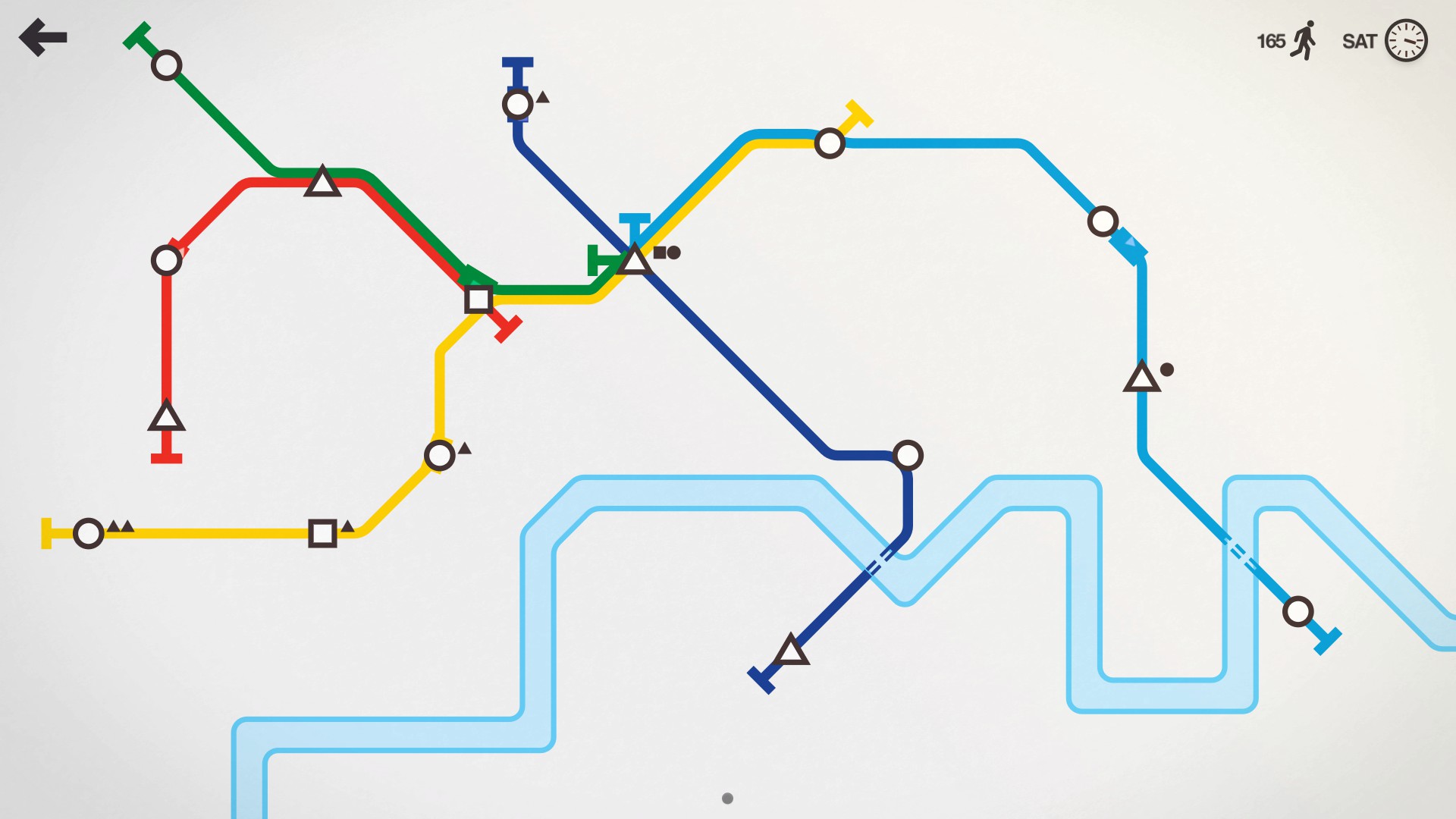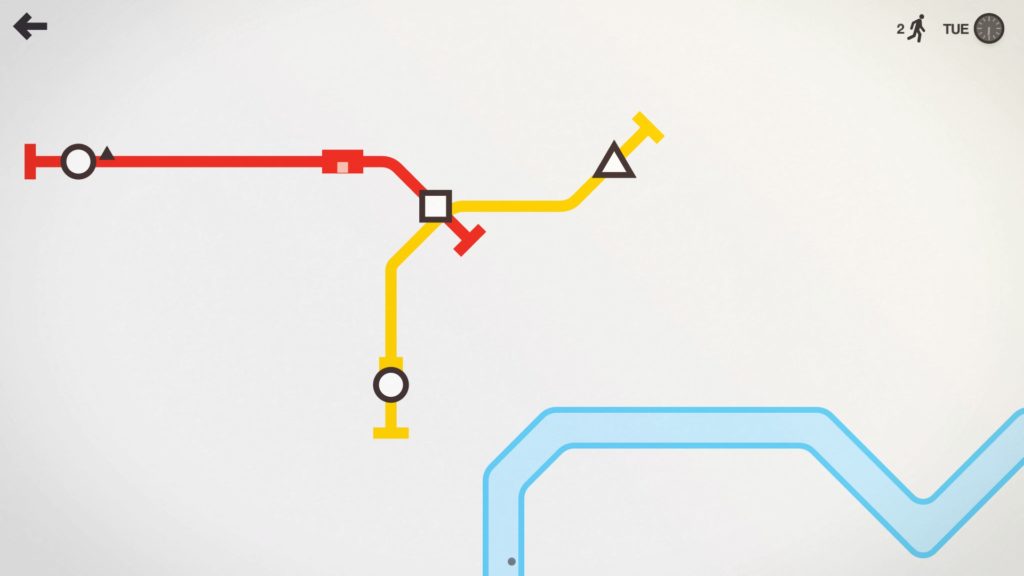Game: Mini Metro
Made by: Dino Polo Club
Published by: Dinosaur Polo Club
Available for: PC, Mac, Linux, iOS, Android
This simple, minimalist puzzle game isn’t an in-depth mass transit simulator, but it’s an easy-to-learn, tough-to-master distraction perfect for limited-time play sessions.
CONTENT
Microtransactions: None
Tedium: None
Violence: None
Graphic Content: None
CONCEPT
Mini Metro isn’t so much an urban transit simulator as it is a puzzle game with the goal of drawing the best transit map. Each individual game of Mini-Metro starts with three shapes (stations) on top of a map of a well-known world city. The player’s goal is to use a limited number of colored train lines to connect these stations in such a way that travelers will be able to reach their destinations efficiently.
Soon after the game begins, commuters will begin to arrive at the stations, each with a shape corresponding to the sort of station they need to reach. A circle-shaped commuter will need to eventually arrive at a circle-shaped station, and a square-shaped pedestrian will need to be delivered to a square-shaped station. In reaching their destinations, commuters will dynamically transfer between lines and will travel as long as necessary to reach the closest station of their shape.
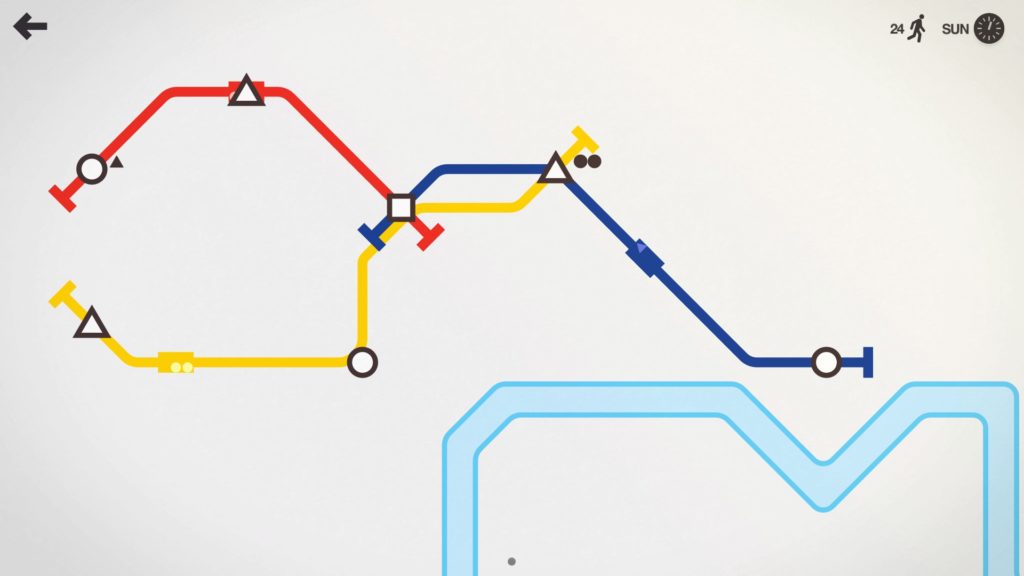
The game’s concept is simple enough, but its challenge comes from the risk of overcrowding; while commuters have no schedule and will gladly wait as long as necessary to reach their destinations, if too many commuters are waiting at an individual station at too long, a timer will appear above the station to show the player how much time they have to resolve the situation before it shuts down. Once any station on the transit grid shuts down due to overcrowding, the game is over.
In a nutshell, mini-metro is a game about drawing transit lines in such a way that pedestrians reach their destinations without causing overcrowding at any one station. That’s most of the game, but a few mechanics add levels of depth; every time an in-game week passes, the player is offered one of two upgrades. These upgrades may be additional lines, engines, train cars, tunnels, bridges, or station upgrades. Upgrades assist the player in their ability to cover the map, but choosing the wrong upgrade may be the difference between a smooth transit week and an overcrowding crisis.
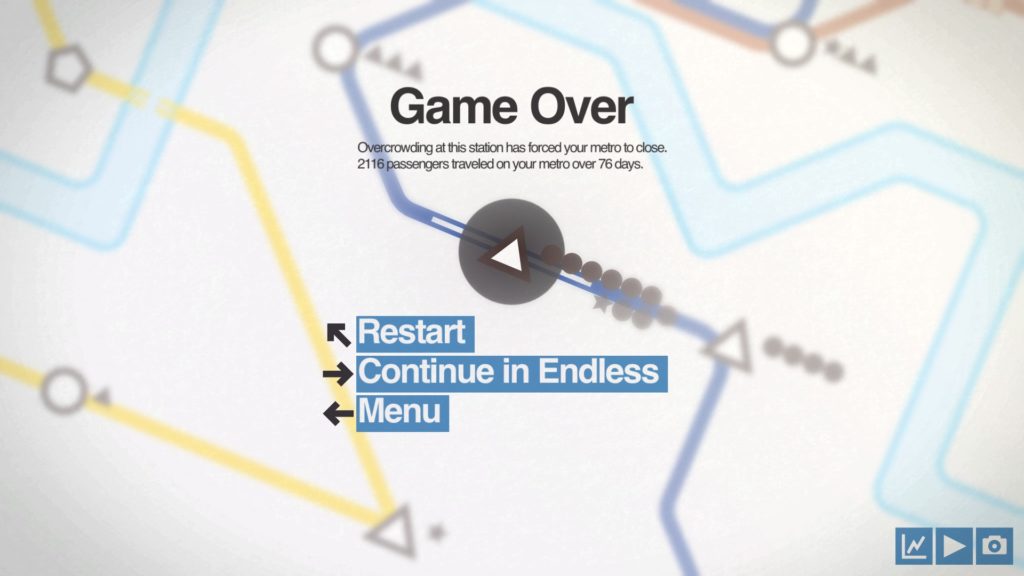
FEATURES
Simple Puzzles: The core concept of Mini Metro is easy to understand: click and drag a transit line to connect stations along it. Use these transit lines to deliver commuters to their destinations. The game’s upgrades give it an additional layer of depth, but it’s never difficult to understand.
Minimalist Style: Based on the aesthetic style of the well-known London Underground map, a muted city background puts the shapes and transit lines of Mini Metro on center stage. The game’s style lends itself well to both its simplicity and its palatability; those familiar with well-designed transit maps will have no problem beginning to build their own.
Relaxing Gameplay: The danger of station overcrowding can be tense, but Mini Metro’s play speed is slow enough that the player should always have adequate time for decision making. The game is challenging, but it’s not particularly stressful.
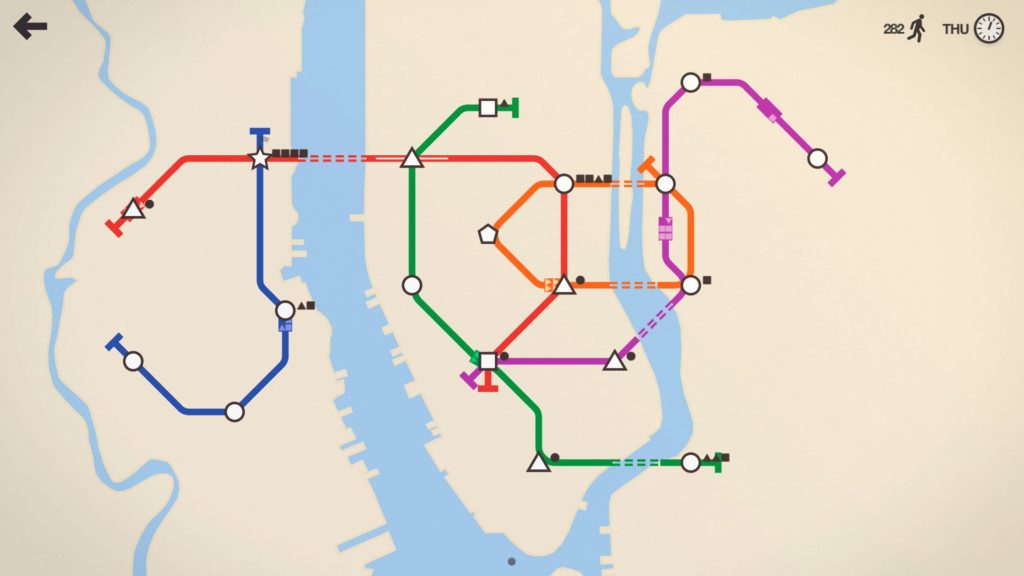
WHAT I LIKED
Theme: If you have any interest in public transit and/or the science behind it, Mini Metro won’t challenge your deeper understanding, but its theme adds a level of intrigue and flair to an otherwise simple puzzle game.
Simplicity: Mini Metro is a perfect game for short, sit-down-and-play sessions. The game itself is challenging, but it doesn’t ask you to sit down and learn much. Once you understand the concept, you’re ready to play indefinitely.
CONCERNS
Not a Simulator: Mini Metro isn’t designed to be an accurate simulation of transit planning, and it doesn’t necessarily play like one. Anyone hoping for the game to be a fun and short puzzle experience will be happy, but those searching for an in-depth mechanical simulation of the inner workings of public transportation should consider looking elsewhere.
Limitations: Mini Metro’s plethora of maps and infinite expansion offer players significant replayability, but if the gameplay doesn’t have you hooked after a few playthroughs, it won’t grab you later on.
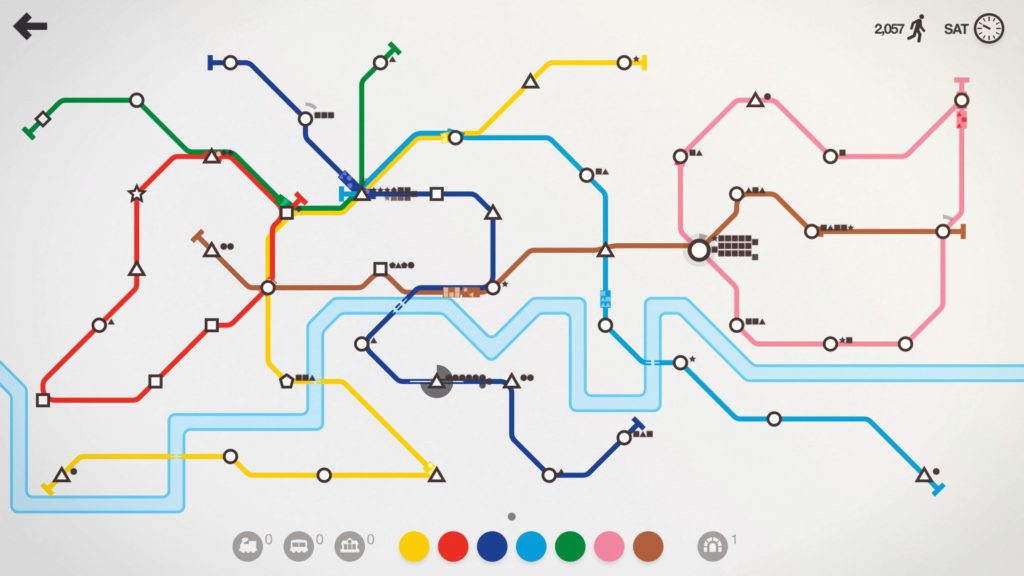
WHO’S IT FOR?
If you’re looking for a relaxing, interesting puzzle game and find Mini Metro’s transit theme compelling, it may be the game for you.
If you’re searching for an in-depth transit simulator or a more hardcore puzzler experience, consider giving this title a pass.
STATISTICS
From Steamspy unless otherwise noted.
Average Playtime*: 5.5 hours
Average Cost per Hour**: $1.82
Median Playtime*: 3 hours
Median Cost per Hour**: $3.33
* Playtime rounded to the nearest half hour
**Costs calculated using a price of $9.99
